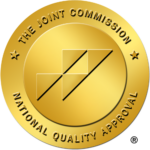In 2015, over 1.8 million people aged 12 and older had used some type of inhalant that year to get high. Inhalant addiction is an urgent and critical issue that must be addressed not only because of its potential to be lethal but because of how accessible many different types of inhalants are to kids and adolescents.
What are inhalants?
There is not an exact inhalants definition in the substance abuse context because there are over 1,000 substances the term can apply to. In general, inhalants are volatile substances; that is, chemicals or gases that vaporize at room temperature, in which their vapors can be inhaled and produce intoxicating psychoactive effects. Inhalants are harmless when they are used as intended, however, their vapors can quickly become harmful and potentially fatal when they are intentionally inhaled for the purpose of getting high.
The psychoactive effects of inhalants are usually immediate, but short-lived. The user will likely only feel intoxicated for a few minutes.
There are four main types of inhalants, each of which can come in the form of common household products:
Volatile solvents are liquids that vaporize at room temperature. Common household and industrial volatile solvent inhalants can include:
- Paint thinners
- Paint removers
- Correction fluid
- Degreasers
- Gasoline
- Glues
- Felt tip pens and markers
- Dry cleaning fluids
- Nail polish remover (acetone)
- Shoe polish
- Rubber cement
- Spot removers
- Electronic contact cleaners
Aerosoles are spray canisters that contain propellants and solvents. Common household and classroom aerosol inhalants can include:
- Spray paints
- Deodorant sprays
- Cooking oil sprays
- Hair sprays
- Fabric protector sprays
- Keyboard cleaners
- Air dusters
- Analgesic, or pain relief, spray
Gases can be used in medical, industrial and household settings. Nitrous oxide, or laughing gas, is a medical anesthetic that can also be found in household and commercial products. Common household gas-based inhalants can include:
- Butane
- Lighter fluid
- Propane tanks
- Air conditioning refrigerants
- Whipped cream dispensers
- Refrigerator coolants
Nitrites, distinct from other types of inhalants that affect the central nervous system. They work by dilating blood vessels and relaxing the muscles. Nitrite inhalants are most often used to enhance sexual encounters:
- Poppers (amyl nitrite), often sold as room deodorizers, leather cleaners, video head cleaners or liquid aroma
- Certain prescription medications for chest pain
Know the common street names of inhalants and the act of inhaling, including:
- Huff
- Sniff
- Laughing gas
- Kick
- Snappers
- Bang
- Poppers
- Rush
- Gas
- Whippets
- Texas shoeshine
- Glue or gluey
- Bold
- Chroming
- Dusting
- Gladding
- Bagging
- Huffing
- Snorting
- Sniffing
Are inhalants addictive?
Individuals who abuse inhalants do not always necessarily develop a physical and psychological addiction in the traditional clinical sense as with other substances. Because of their accessibility, however, inhalants can be easily and frequently abused.
Even if an individual is not addicted to inhalants, busing inhalants can have dangerous and potentially fatal short-term and long-term side effects. While the brief high from inhalants can produce feelings of euphoria, it can also cause the following effects:
- Increased heart rate
- Loss of inhibitions
- Tremors and shaking
- Dizziness and vertigo
- Confusion
- Drowsiness
- Nausea
- Vomiting
- Feeling light-headed
- Drowsiness
- Hot flashes
- Headaches
- Impaired judgment
- Loss of balance and coordination
- Dry mouth and loss of thirst
- Seizures
- Agitation
- Irritability
- Aggression
- Burning or irritation, particularly in the eyes, nose and throat
- Visual and/or auditory hallucinations
- Dissociation
- Nose bleeds and sores around the mouth
- Increased risk of burn injuries from inhalants like butane and propane
- Delirium
- Brain damage
- Coma
- Sudden death
- Pneumonia
- Stomach ulcers
- Liver and kidney damage
- Lung damage
- Circulation and blood production issues
Inhalants can also cause withdrawal symptoms like headaches, nausea, irritability, cravings and muscle aches when frequent users of inhalants suddenly stop or reduce their use.
The following signs may suggest inhalants are being abused:
- Paint stains on skin or clothing, from spray paint
- Chemical odors on breath and clothing
- Red and/or runny eyes and nose
- Sores around the mouth
- Appearing intoxicated
- Possession of or hiding empty aerosol cans, solvent containers or chemical-soaked fabric
- Obsession over obtaining inhalants
- Missing school, work or other responsibilities
Is inhalant recovery possible?
Freedom Detox approaches addiction recovery and detox with respect, trust and compassion. Inhalant addiction can be treated through detox and therapy, and we will set you up for success by providing coping tools to carry with you once treatment is completed. Reach out today at 800-475-2312 if you or someone you love is struggling with inhalants addiction.





